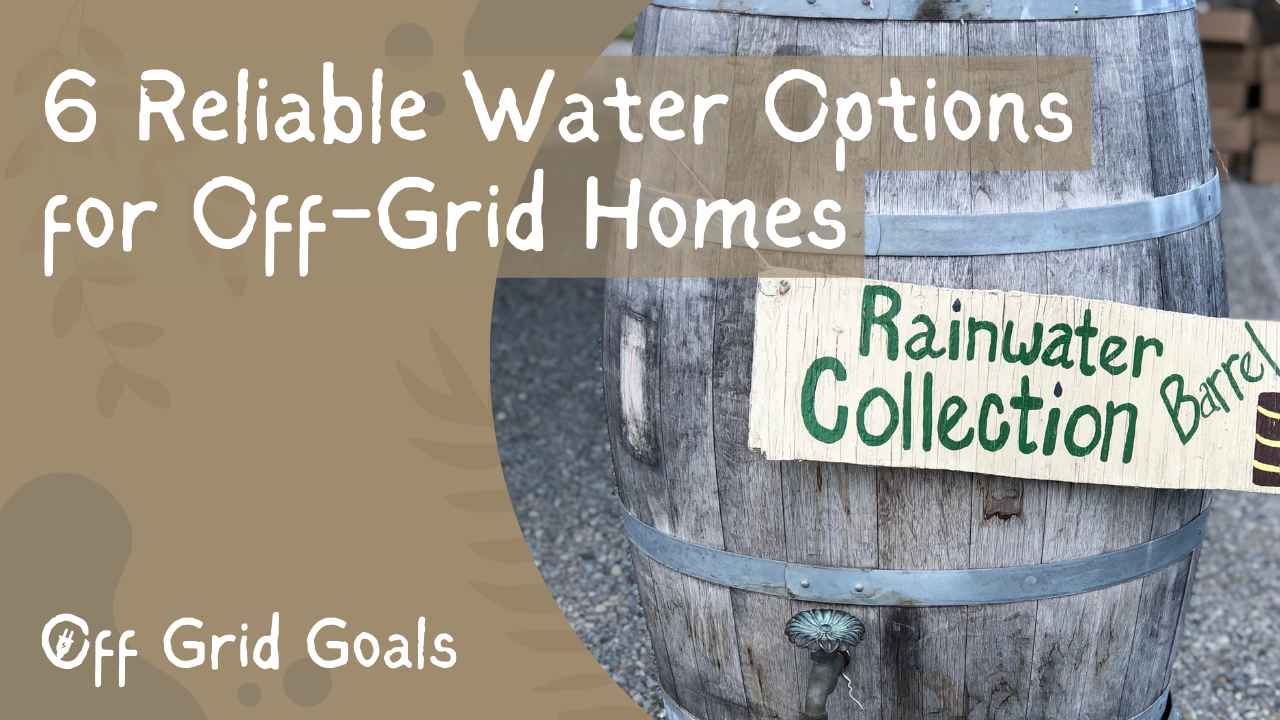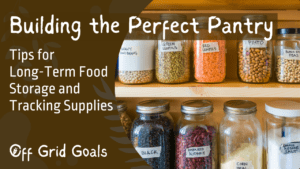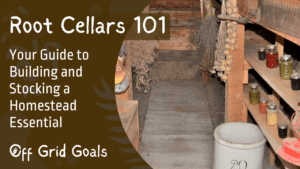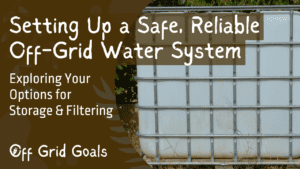When it comes to living off the grid, securing a reliable source of water is absolutely key to success. Here are 6 options to explore as you look at potential land choices, or as you get setup.
Rainwater Harvesting
Picture this: gentle raindrops cascading from the sky, filling up your rain barrels with crystal-clear water straight from the heavens. Ok, in real life it’s generally a little less peaceful and more catching a downpour that overflows your tanks for many areas…
But rainwater harvesting is like nature’s gift to off-gridders, offering a sustainable and cost-effective way to capture and store water for drinking, gardening, and bathing. Plus, it’s practically free (aside from the initial setup costs), making it a budget-friendly option for penny-pinching homesteaders.
To figure out if this is a legitimate option for you, check out the average annual rainfall where you’re considering building using the National Weather Service’s Rainfall Scorecard (type your zip code in the top left).
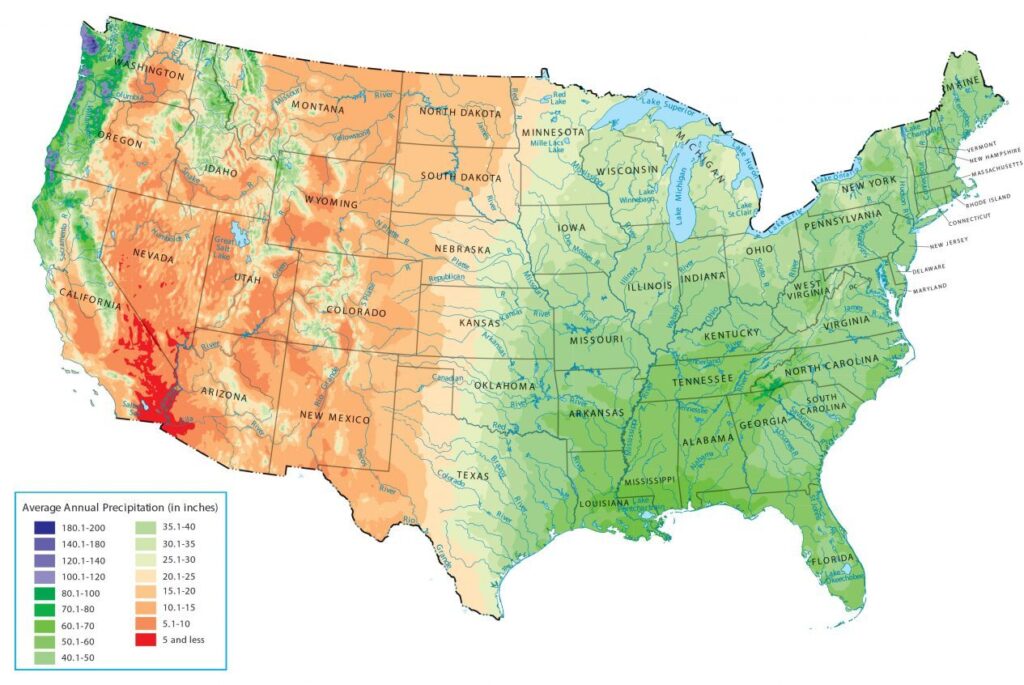
Source: GIS Geography
Even if rainwater harvesting isn’t your main source of water, consider adding rainchains that allow you to beautifully water your plants!
Well Water
For many off-grid properties, this is the “holy grail”. Digging a well on your property can provide a steady supply of groundwater for all your watering needs, from drinking and cooking to bathing and laundry.
While the upfront costs of drilling a well can be steep, the long-term savings on water bills and utility fees make it a worthwhile investment for homesteaders with deep pockets (haha).
But it’s not an option everywhere. And in some places it can be MUCH more expensive than others. The best way to see if this is an option for you is to do some research.
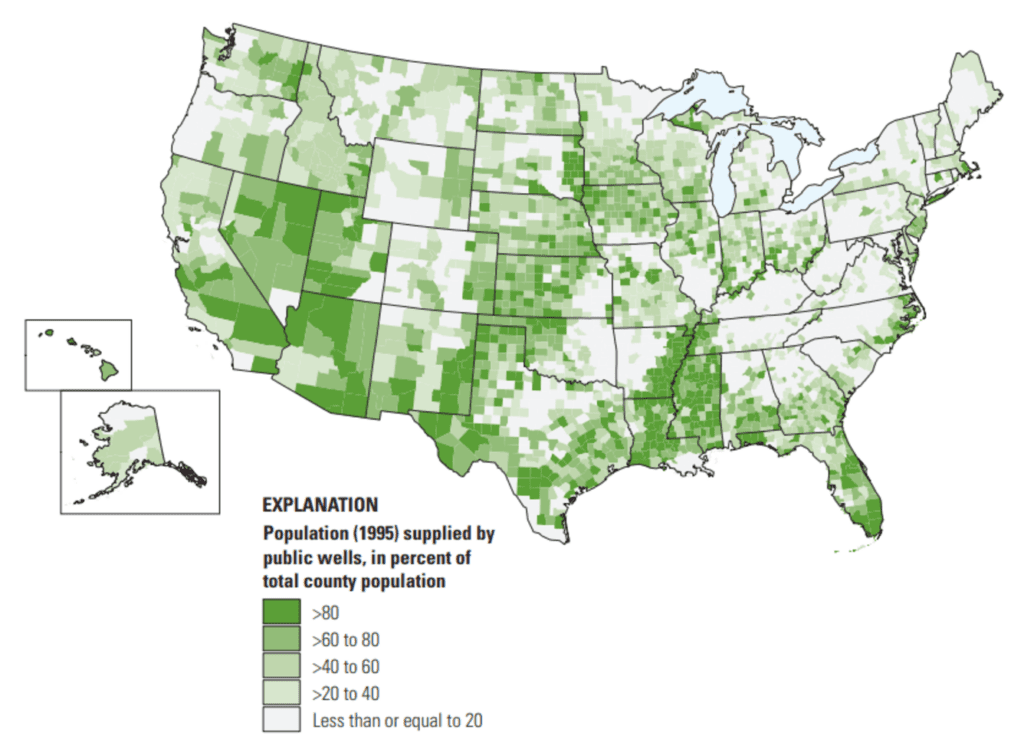
Source: USGS Circular 1346
Here are some solid links to get you started:
- https://www.usgs.gov/mission-areas/water-resources/science/public-supply-wells
- https://wellowner.org/
Many counties and some states provide information on their websites listing well permits issued and whether water was found, as if so at what depth. Take the time to check this for your area and see what others have found (or not) around you.
Finally, reach out to well drillers in the area and ask what’s typical for your area, what’s the best case and worst case scenarios they see, and what the cost range is for those situations. Get as many quotes and as much feedback as possible to get a better idea of what’s realistic.
Spring Water
There’s something undeniably magical about spring water—pure, pristine, and bursting with natural goodness straight from Mother Earth.
If you’re lucky enough to have a natural spring on your property, tapping into this hidden gem can provide an endless supply of delicious drinking water without the need for costly drilling or filtration systems.
Just be sure to test the water quality regularly to ensure it’s safe for drinking, bathing, and other household uses.
Surface Water
From babbling brooks to meandering rivers, surface water sources offer a picturesque and plentiful supply of H2O for off-grid homesteaders.
Whether you’re dipping your toes in a cool mountain stream or casting a line in a tranquil pond, surface water sources provide a refreshing and rejuvenating source of hydration for humans, animals, and plants alike.
Just be sure to filter and treat the water before using it for drinking or cooking to remove any contaminants or pathogens.
Hauling Water
When all else fails, sometimes you’ve got to roll up your sleeves and haul water the old-fashioned way.
Whether you’re trekking to the nearest spring, well, or community water source with buckets in hand or hitching up the ol’ water wagon for a backcountry adventure, hauling water is a time-honored tradition for off-grid homesteaders in remote locations.
While it may not be the most glamorous option, it’s certainly an option and many homesteaders do rely on hauling water.
Figure your expenses for this including water tanks, treatment and filtration and a trailer/gas for hauling. Research your area to find out where you can haul water from and what the costs and rules are. Your city or county water offices are a good place to start.
Create Your Own Water from Atmospheric Condensation
I ran across this option while researching water sources for West Texas (where wells might not be an option and hauling water doesn’t sound like a great long term plan to me!). I’ll admit, this one I’m a little skeptical about. I’ve used a dehumidifier and understand the concept… but the power cost of running might be an issue if you’re off-grid, so make sure you do your electricity math!
Wikipedia explains how an Atmospheric Water Generator works, and it’s being used in desert areas by NGOs and other groups. You can find them under many brands including Air-o-Water, Akvo, and WaterGen. They’re not cheap.
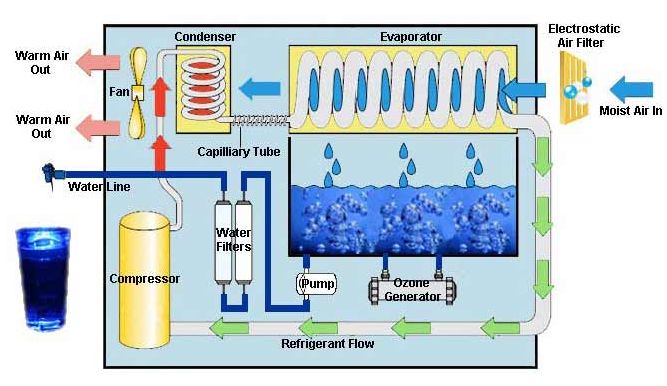
Source: http://www.everestwater.com/purification.htm (CC-by-sa-3.0)
And apparently it’s possible to build your own with The Air Fountain System – Yes, we purchased this. The instructions are clear and we’re curious to try building our own. We’ll post when we do and share how it goes!

What’s the Best Option for You?
Everyone’s off grid water supply solutions will vary depending on the land and what’s available, there’s no one-size-fits-all.
Whether you’re harvesting rainwater, drilling a well, tapping into a natural spring, or hauling water the old-fashioned way, each option has its own unique benefits, challenges, and cost considerations.
So weigh your options, do your research, and choose the water supply option that’s best suited to your off-grid lifestyle and budget.

